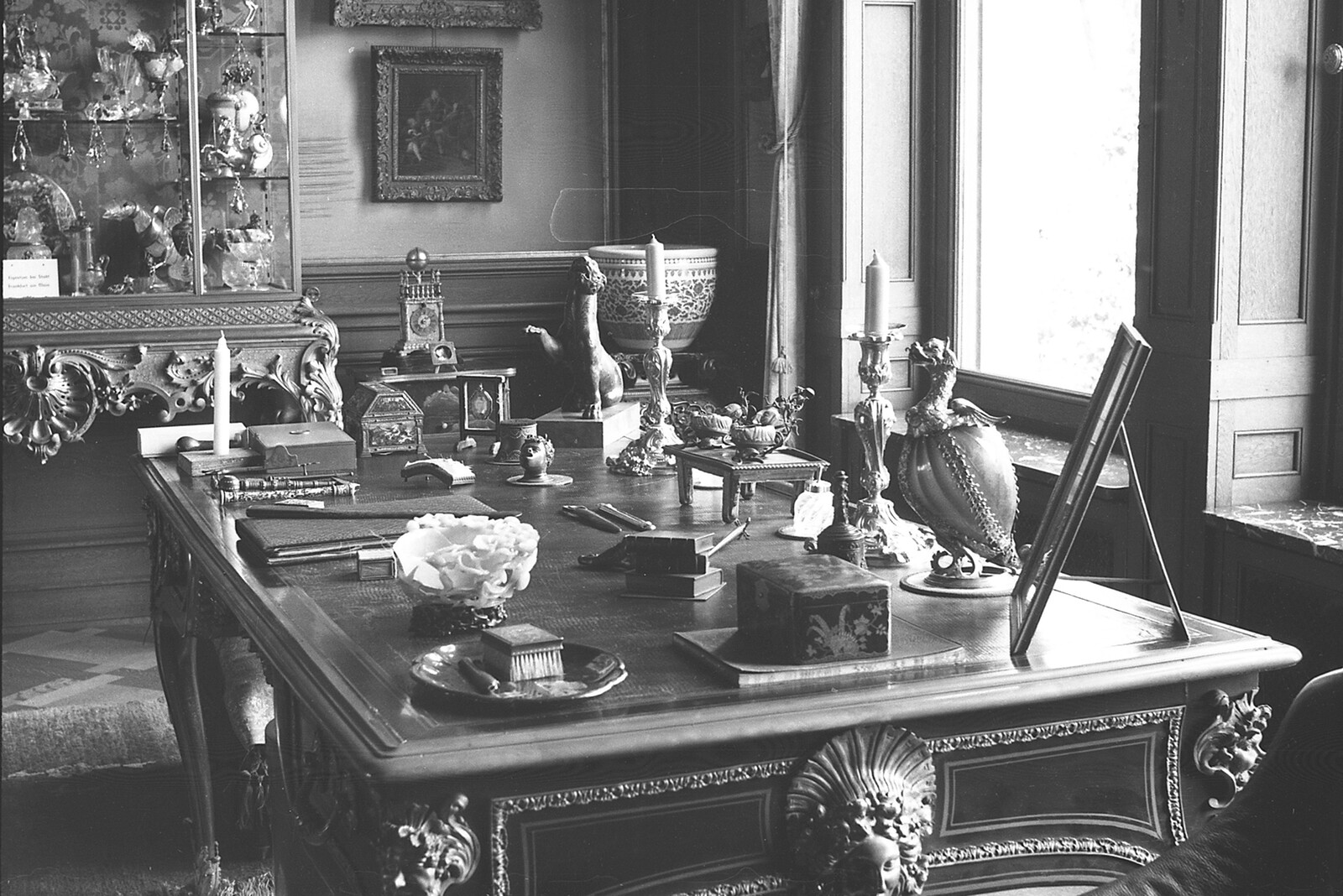January 28–June 4, 2023
Schaumainkai 17
60594 Frankfurt am Main
Germany
Hours: Tuesday–Sunday 10am–6pm,
Wednesday 10am–8pm
T +49 69 21231286
info.angewandte-kunst@stadt-frankfurt.de
The Collection of Maximilian von Goldschmidt-Rothschild by the Museum Angewandte Kunst is the first exhibition dedicated to the private collector and patron, and his former art collection. Its history mirrors the life of its owner who was persecuted as a Jew under National Socialism. Hence the exhibition focuses on the sale of the collection to the city of Frankfurt am Main due to Nazi persecution in 1938, the subsequent transfer of the artisanal pieces in the collection to the Museum für Kunsthandwerk (today Museum Angewandte Kunst), and the return of a large part of the collection to its rightful heirs after the Second World War.
Maximilian von Goldschmidt-Rothschild was the only person of Jewish origin to be ennobled as a Prussian baron by Emperor Wilhelm II. He was able to combine professional success, education and philanthropic commitment. As a passionate art collector, he was in contact with museum directors and art dealers all over Europe. In the early 20th century, his private accumulation of over 1500 objects was regarded as one of the most important collections in Germany.
In 1938, National Socialist persecution forced him to sell not only the collection, but also his residence, the Rothschild Palais, to the city of Frankfurt. The palais, and with it, the artisanal part of the collection became the Museum für Kunsthandwerk II. The Städel Museum received the collection’s paintings, and the Liebighaus took over the sculptures. This purchase by the city of Frankfurt was probably the most sensational case of art and property acquisition in Frankfurt during the Nazi Era.
Initially the city of Frankfurt and the museum directors, who had remained in charge even after National Socialism, vehemently resisted the heirs’ request for the restitution of the collection after 1945. In early 1949, the museums finally returned a large part of the art objects over the course of a settlement between the heirs and the city of Frankfurt. In 1950, numerous objects were sold at two big auctions in New York and were subsequently scattered across museums and private collections all over the world by American art dealers. To this day, the origin of the former Maximilian von Goldschmidt-Rothschild Collection lends a special provenance value to these objects.
The Collection of Maximilian von Goldschmidt-Rothschild is the museum’s most elaborate exhibition both in terms of development and realisation. The collection and its story are mirrored in the history of the Museum Angewandte Kunst. The latest results from the provenience research conducted at the museum provide the basis for a critical inspection of the institution’s own history. On that score, the exhibition presents and scrutinises objects that are still part of the museum’s inventory.
Select international loans from renowned museums and private collections enhance the presentation: rare Medieval relics, valuable pieces of early modern craftwork (receptacles, silver chalices, utensils, sculptures, majolica, enamelled glass, porcelain, miniatures, and snuffboxes), but also exquisite paintings by old masters as well as Louis XV furniture. The contextualisation of the art objects and the history of the collection in the tension field between “gap” and “reconstruction” is the aesthetic starting point. For Frankfurt am Main, this historically (and culturally) charged exhibition has great (art) historical relevance. It is also the first endeavour to establish the contemporary global connections between the exhibits to their provenance.
To underscore the process of laying the foundation stone for a path of remembrance into the future, a multimedia app was developed for the exhibition. Visitors can use virtual and auditive elements as well as augmented reality to reconstruct parts of the history of Maximilian Goldschmidt-Rothschild’s collection and to project additional information into the museum of today.
Curator: Katharina Weiler, Matthias Wagner K
Director: Matthias Wagner K
Press contact: Natali-Lina Pitzer, T +49 (0)69 212 75339



